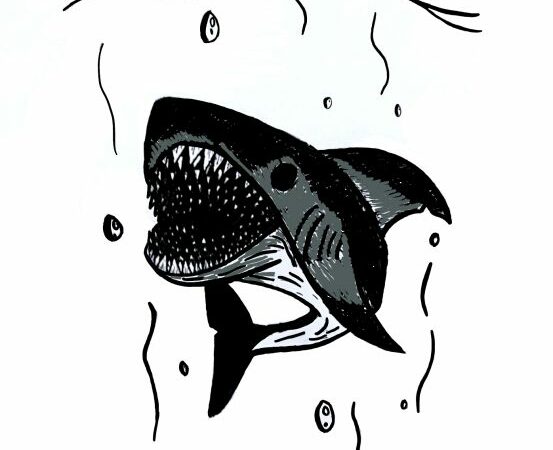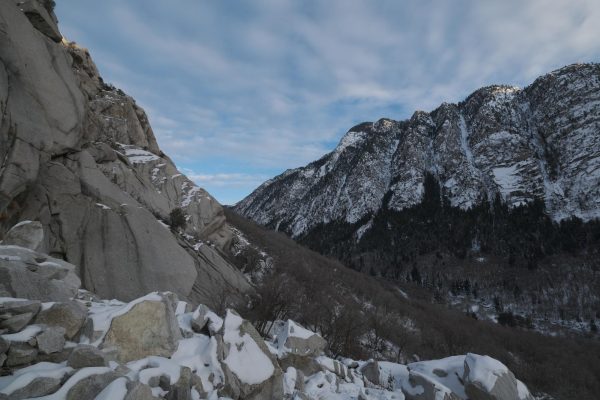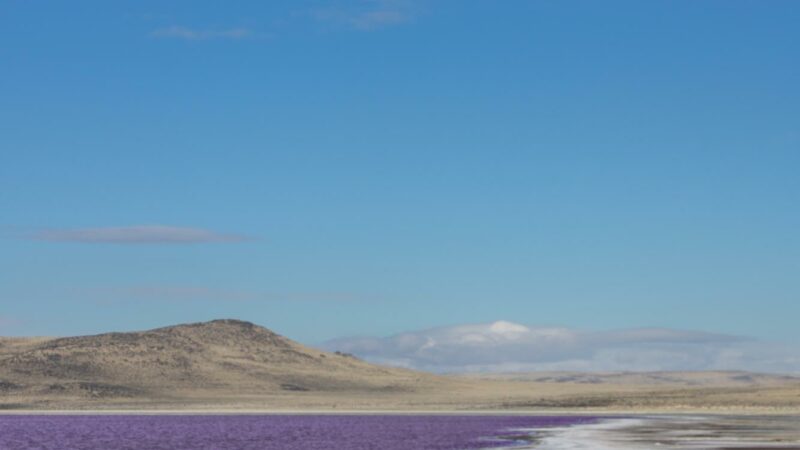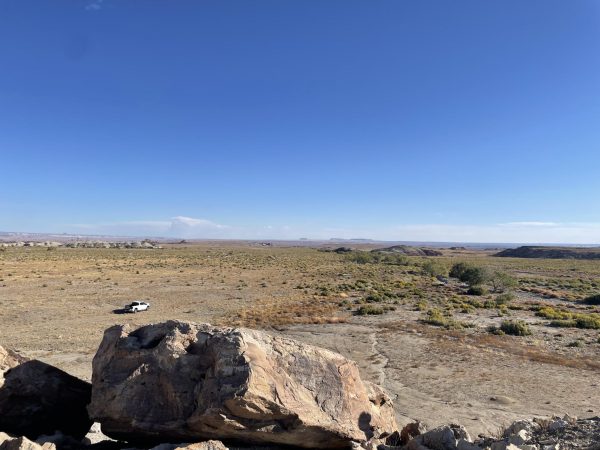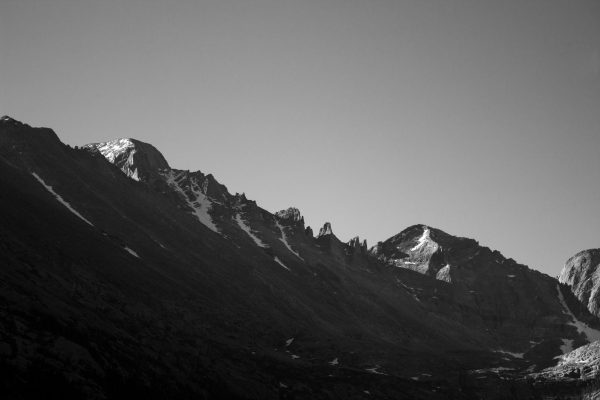A Field Trip to Baja California Sur
Todos Santos is a small town near the southern tip of the Baja California peninsula in the Mexican state of Baja California Sur. The quaint town is flooded by weekend tourists, immigrants from mainland Mexico, and local families who have lived there for generations uniting cultures, arts, foods, and environments, feeding its rich history. Central to this history is the vaquero ranching tradition, a farming style developed in Medieval Spain and brought to the peninsula by Spaniards and Jesuit missionaries in the early 1700s. This ranching culture–and its growth alongside conservation and ecotourism–was a focus of my field research learning abroad trip this summer.
Field research, or fieldwork, is the umbrella term for scientific research outside a typical lab setting. Instead of white coats and goggles, field researchers don hydration packs, wide-brim hats, bandanas, and work boots. Fieldwork can involve research from wildlife science to immersed cultural studies. My field school, which gives college credits for field research, was the latter and was run by University of Utah professor, Dr. Shane Macfarlan. Dr. Macfarlan uses field research involving interviews and cultural immersion to study traditional ranching communities in Baja California. He runs this learning abroad trip to give students transferable skills and experience in cultural, ecological, and archaeological fieldwork.
Out in the Field
In the first part of the field school, our groups conducted various field research surveys. We surveyed present plant species, cactus health, and surface-level archaeology. We also conducted transect surveys in Todos Santos’ historic and contemporary cemeteries. We walked in parallel lines about 15 meters apart to collect the cemeteries’ demographic information. In addition to survey research, we learned about the history and culture of Baja California Sur. We visited a local elementary school, volunteered at a small non-profit recycling center, and went fishing with local fishing cooperatives. It was both exhilarating and exhausting. The culture shocks and language barriers took some adjusting. We were almost always outside, on our feet, in the hot and humid air.
The field school also included smaller trips around Baja California Sur. Our first trip outside Todos Santos was to a traditional ranch called Rancho El Refugio. El Refugio is situated in a protected Biosphere Reserve. Its traditional ranching style relies on a deep understanding of the harsh desert environment. Another excursion was to a ranch called Rancho Cacachilas. Rancho Cacachilas is a highly funded area that caters to high-end eco-tourist clients (whose stays help fund the ranch) and focuses on sustainability practices that can be shared with other ranching communities. We were served gourmet farm-to-table meals, participated in honey-tasting, beekeeping, goat-milking, took refreshing bucket showers, and stayed in gorgeous “glamping” casitas.
In these trips, we were immersed in the modern vaquero ranching tradition. Particularly in El Refugio, we learned that ranchers know all the oases in the area, how to utilize every desert plant, and how to take care of livestock in a stressful environment. We also had a clear window into the cultural evolution the ranching communities are experiencing in response to ecological challenges. The family running El Refugio has adapted to the natural environment and is adjusting to environmental changes by incorporating ecotourism as a funding source. Campsites on the ranch allow tourists to live close to the ranching family, experience the local ecology, and see firsthand the ranching culture.
A Changing Culture
Increased ecotourism is not exclusive to Rancho El Refugio and Rancho Cacachilas, and will continue to expand throughout the peninsula. Unsurprisingly, according to interviews conducted by Dr. Macfarlan and his team, local ranchers are interested in incorporating ecotourism. This will continue to impact ranching and help share the ranchers’ culture.
Sustainability practices—a relatively new focus of El Refugio—have been the main cultural focus of Rancho Cacachilas for quite some time. Throughout our stay at Cacachilas, we learned that the ranch is a self-sufficient area. Cacachilas has developed gabions (dam-like structures) on the property that better retain water from hurricanes. The gabions keep the oasis stream flowing for most of the dry season and help refill the local aquifer. Additionally, the ranch has hygienic goat milking stations that improve goat health, seed gardens that increase the ranch’s productivity, and partners in nearby sustainable fisheries. Both Rancho Cacachilas and Rancho El Refugio have invested in sustainable crops for human and livestock consumption. Unlike water-intensive grasses—like alfalfa—the ranchers let livestock forage on native grasses. They also supplement livestock’s diets with unusable corn stalks and drought-resistant crops, such as goat “superfood” moringa.
Sustainability practices in Baja California Sur are a long-term investment. They require time and money and often need help from outside sources. To contribute to sustainability, Rancho Cacachilas provides workshops to ranchers on the practices the ranch is implementing. Similar to Dr. Macfarlan, the ranch works with conservationists, and is equally interested in conservation as they are ecotourism.
A Vibrant Ecology
Our second-to-last stop was Isla Espiritu Santo. This island is a protected area rich with biodiversity and archaeological sites. Our two-night stay was jam-packed with activities like snorkeling, hiking, sea-kayaking, stargazing, and watching the sunrise. The bay we camped in was magical, a complete immersion in Baja California ecology. The water was teal blue and calm. Behind us were desert mountains, grayish-orange and muted green, covered in sagebrush and cardon cacti. The beach was all soft sand with a line of hard shells at the tide line, periodically covered in shells, coral, gulls, and ancient artifacts. There was a hint of seafoam to complement the crystalline water. We fell asleep to the sound of the ocean breaking on the shore. We experienced all sorts of wildlife up close: dolphins, herons, sea turtles, sea lions, and frigate birds.
Through this incredible immersion, we gained a greater appreciation for the ecological constraints the people in Baja California Sur, ancient and modern, lived with. Despite the beauty and biodiversity, the landscape was severe. There was little plant life besides the sharp desert flora, there was no fresh water on the island except for a lagoon filled only by seasonal hurricanes, and the heat and native bees were sharp adversaries. Yet despite it all, ancient people adapted to the land, and modern people are doing the same.
Applying What We Learned
There is a lot about Baja California Sur that is reminiscent of the state of Utah, with a vibrant culture, complex history, and harsh ecological conditions. We can also learn much from Baja California Sur, past and present. The sustainability practices and ecotourism being implemented in ranching communities are valuable strategies to explore in Utah. This is one critical reason why field research is essential. Through our experiential, immersive learning, our group learned about local innovations within cultural and ecological contexts. We learned about sustainability strategies in meaningful and inspiring ways. We got to see the results of Dr. Macfarlan’s field research we helped collect. And, we saw how ranching communities have begun incorporating sustainability into their lives, guiding us toward future implementation.
Saying goodbye was surprisingly hard. Every day, in the field or on excursions, felt so long. The days were packed with new experiences, some incredible, others quite challenging, and many a mixture of both. Yet, my time as a part of the Baja California Sur Field School flew by. I couldn’t be more grateful for the highs and lows, from karaoke night to bee stings. I am also thankful for the things I learned. I was able to see real people making a difference despite the constraints of their ecology and culture. These real people are working to make their homes, their environment, and the world, better, more sustainable places.
If field research interests you, watch out for my future articles about field research at the University of Utah. If you’re interested in the Culture, Ecology, and Sustainability Field School in Baja California Sur, you can find more info from Learning Abroad, University of Utah, at learningabroad.utah.edu.
The post A Field Trip to Baja California Sur appeared first on Wasatch Magazine.
Source: https://wasatchmag.com/a-field-trip-to-baja-california-sur/


